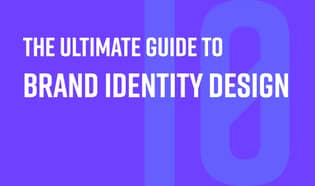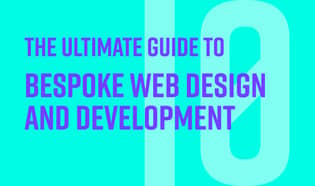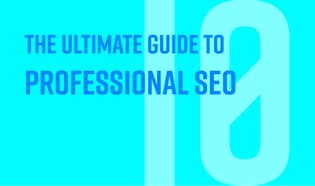The ultimate guide to print design
It’s easy in the digital age for businesses to overlook the power of print design. However, there is a resurgence in the demand to have beautiful print material. Customers value the tactile qualities of a creative design on high-grade paper with vibrant colours. As a business owner, you have seen this print revival first-hand and are likely spending time and money on printed materials for your brand.
If you’re looking for ways to add marketing power to your brochures, brand materials, and business cards, understanding the basics of print design is essential. Developing an outstanding first impression in print is not something you can do yourself without experience. That is why it’s best to collaborate with a professional print designer to achieve the best results.
As consumers get fatigued from digital marketing, rich print content stands out. Below we will look at the fundamentals of print design and what you should consider when commissioning graphic design for print.
Types of print design
One of the benefits of design for print is how flexible it is. There are many marketing formats that can communicate your business or product. For example, newsletters and brochures hold information, encouraging customers to take more time with the material. Posters or sale materials engage the customer instantly and need to be punchier to drive home their message.
Perhaps you’re printing product information and need to include small print to cover legal liabilities. Whatever your needs, appealing print design can help you reach your goals with impressive outcomes.
Distinct types of print design include:
- Packaging and labels
- Brochures
- Business cards
- Stationery
- Posters
- Flyers
- Banners
- Point of sale
- Display panels
- Menus
- Magazines
Things to think about before commissioning print design
Before commissioning a printed piece of work, you should take the time to consider the key messages you want to convey. In what way will the customer consume the material? What do you want it to say? What is the goal of the material? These elements will dictate aspects of your print design, such as format and size.
Below are examples of design in print that can help your decision-making process before commissioning a design:
- A restaurant menu must be on durable paper stock because customers need to hold it without it folding. You need the copy to be a good mix of information (menu items), and design (fonts and imagery to reflect the nature of the restaurant).
- Flyers must be durable, but they need to convey information and grab attention. Flyers end up on the floor, so they should not have lots of information. Instead, they should focus on an impactful and bold design.
- A newsletter will be information-heavy, so may not need to have robust design elements. It will need to have a readable format and have visual elements to make it as accessible to readers as possible.
Packaging has unique demands, such as how big you want the display unit to be. Product packages have barcodes, legal information, opening guides, and other elements. It’s important to consider what you need before your print designer starts the project.
Print design elements
You should consider how your brand identity ties into the print design material you release. There are benefits if the print design and content you offer is consistent with your brand. For example, graphic styles, colours, and fonts all play crucial roles in your brand identity, and you want your marketing collateral from print material to match your brand goals.
When considering your design for print, the following elements our team of experts offers are all part of your vision:
- Design
- Illustration
- Copywriting
- Photography
Considerations before commissioning print design
When you commission print design, it’s worth remembering the end goal is to communicate. Your printed material will be a point of contact between your business or product and the customer. In any form of visual communication, superior design is essential to get the best results.
This is true in print material, where the layout, typography, colours, format, and other elements dictate how impactful and engaging the design is. That is why you need to think about the components of visual information before commissioning your design.
Below are the main aspects our design team will use to help you understand each visual component to create the best print material for your business:
- Hierarchy of content
- Logical layout
- Heaviness of text
- Good typography that’s clear and legible
- Striking, engaging imagery
- Quality print
- Consider the print process (the specific print process and paper stock can impact elements of the design, such as fonts and imagery)
Understanding the technical side of printing
Like any other marketing or business process, there is jargon and technical speak surrounding print design. Unless you’re a professional in design on print, these terms may be confusing. In this section, we’ll debunk the processes of print design and explain them in a straightforward way.
Raster and vector files
Before we explain print file formats, it’s important to understand what raster files and vector files are and the difference between them:
Raster files are a specific size and resolution from creation because they are made of pixels. As you may have seen when zooming an image on a screen, the downside to a raster file is resolution blurs when you enlarge the image. In other words, raster files are not a satisfactory solution for large print formats. Popular raster file formats include PNG, JPEG, RAW, and TIFF and at least 300 dots per inch (dpi) is necessary for quality print.
Vector files are more flexible because you can enlarge or make them smaller without losing the sharpness and visual quality. File formats like .SVG, .EPS, and .AI are vectors because they geometric shapes, not pixels (dots).
Print files
What file type is in use depends on the media you’re viewing. Photographs are raster files, while graphics and fonts are vector files. Artwork developed by a creator will usually have a combination of raster and vector formats.
This means you have much more flexibility when overseeing your print material. When you commission a print design, the artist builds a source file on an application like InDesign or Adobe Illustrator. These tools allow raster images to be exported, allowing our team to share PDF files with you so you can review and suggest changes.
When the final design is complete to your specifications, the final high-resolution PDF is sent to the printer. Depending on the project parameters, the file may also contain printer marks to separate the design and assist the printing press in successful trimming, colour accuracy, and alignment.
All the following components of the print file are trimmed off on the final print design:
- Crop marks – Lines on the corners that indicate where to trim the design.
- Fold marks – Dotted lines that shows where folds in the print are.
- Bleed – Where the image extends beyond the trim for removal after the print.
Cutter guide – Sometimes regular crop lines are not enough if the file has irregular shapes or design elements. In this instance, the pre-print artwork will include a cutter guide that charts a path around the design to show the printer where to cut.
Colouring
Moving onto colour, the file will be in CMYK colour mode and not Pantone. What’s the difference between these modes? Well, CMYK is the industry standard, although Pantone colours are also common because they give brighter results.
- CMYK – the industry standard for printing colour, CMYK means Cyan, Magenta, Yellow, and Black, which are the four pigments used in modern digital printer technology. These colours combine to create the artwork and other elements of your print design. Some printers may denote CMYK as “four colour” or “process colour.” CMYK colour consistency is dependent on the paper stock and printer hardware.
- Pantone – Also known as Pantone Matching System (PMS), this is a popular colour matching method that is known for delivering more vibrant colour consistency. It uses swatches with numeric value. Pantone is interesting because it can add extra dynamic elements to print design, such as fluorescent and metallic colours. Despite the benefits, it is more expensive than CMYK.
What are the different types of printing?
When we talk about print design, we are talking about a different type of printing than what most people use. In your business or at home, you use a laser printer for your printing needs. Creating visual marketing printed material like flyers, posters, brochures, packaging, and newsletters requires the use of a professional printer.
Below are the professional printing techniques you can commission to deliver your printed design material:
Digital printing
Popular and an excellent choice if you want to combine professional print quality with affordability. Digital printing is an ideal solution for small print runs or if you need to finalize a project, so it’s perfect for restaurant menus, posters, and signage. Also, it doesn’t require printer plates because the print design is sent to the printer as a PDF.
Offset lithography
If you need a large print run, offset lithography is worth considering because of its versatility. It is common in book printing, although it is complex for smaller projects because it needs metal printing plates. This is where the design professional offsets the content onto rollers which then print to the media.
Flexography
Ideal for businesses using print design for labels and stock packaging, flexography also uses printing plates. The process involves rotating the plates at high speed to transfer the print. This technique is perfect for printing onto uneven surfaces, such as plastic bottles.
Large format
An ideal solution for large signage, banners, and billboards. Prints are put onto large rolls of paper which are then rolled out onto the signage.
Screen printing
For logo and graphics on fabric materials, screen printing is a great technique to use. It works by using a fine mesh screen to push ink through and onto the clothing or other fabric.
Paper stocks and finishes
While working with a print design professional and understanding the process is important, it’s worth knowing about paper stocks and print finishes. There is a near-endless number of paper and code stocks available and an equal number of finishes and colours. That means you can create something unique and give your designs a greater impact.
Union 10 Design provide paper samples to help you choose the best stock and make decisions before committing to a final design. Our team can give you advice on the best paper stock and finishes. For example, a heavier paperweight is ideal for material that needs to be durable or have a premium look.
When selecting paper, you need to consider how different stocks and finishes can impact how colours look. A good example is a coated stock that shows ink lighter than on an uncoated stock. The print process can impact the overall finish and colour consistency of your print design.
Print finishes
While there’s an endless number of print finish combinations, some are more popular and functional than others. Here are the top print finishes that help your print designs standout from the competition:
- Lamination
- Varnish
- Embossing
- Foil stamping
- Die-cutting
- Letter press
- Metallic inks
The importance of printer proofs
During the design process, it’s important you know what is happening and can make changes. That’s why we provide printer proofs to highlight the print design while the project is ongoing. You can view the current artwork in a free PDF file and can make changes before committing to a print.
A PDF file will not give you a true representation of the colours. To get this, you need to request a wet proof that is printed onto the stock you’ve chosen. However, this does cost money. It’s worth weighing up the size of your project and budget before deciding if a wet proof is a sound investment.
Storing print files
When you commission a print design, you receive the complete final artwork as a source file as well as the printed material. This allows you to keep a backup on your system so you can do more print runs in the future. We advise against trying to make your own design updates to this file. If you want the best print design results, it’s always best to work with a professional.
Conclusion
Businesses are all about finding value from the solutions they choose, so you may be asking if print design is a worthy investment. The simple answer is yes… Understanding the basics of print design and working with a professional to bring your ideas into reality is an ideal way to take your marketing to the next level.
As more consumers embrace print marketing once more, having professional printed material is essential. By collaborating with us, you can get the print design you want without compromising on your vision. Remember, even when commissioning a designer, you should maximise the value and follow these fundamental guidelines:
- Invest in a good designer, who understands aesthetics and communication hierarchy
- Think about paper stocks and finishes — ask for samples
- Check artwork for spelling and grammar
- Always try and get a printer proof, so you can check a project before the final print run.
Get in touch today and we’ll add a new dynamic to your marketing with professional print design services.



